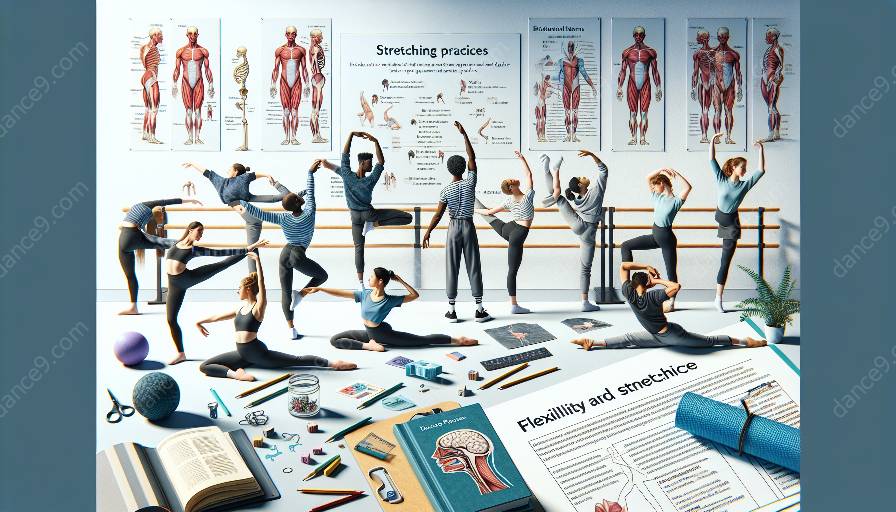Dancers rely on flexibility to execute their movements with grace, ease, and fluidity. Without adequate flexibility, dancers are at risk of injury and limited in their ability to achieve complex dance sequences. Therefore, evidence-based approaches to improving flexibility in dancers are essential for maintaining physical and mental health in dance.
Importance of Flexibility in Dance
Flexibility is a cornerstone of dance performance. Dancers require a wide range of motion to achieve various choreographic movements, balances, and leaps. Enhanced flexibility also aids in preventing injuries, as it allows dancers to move more freely and efficiently, reducing the strain on muscles and joints.
Moreover, flexibility contributes to the aesthetic quality of dance by enabling dancers to attain the long lines and extensions that are characteristic of many dance styles. It also plays a crucial role in achieving certain dance techniques, such as splits, arabesques, and développés.
Evidence-Based Approaches to Improving Flexibility
1. Dynamic Stretching: Incorporating dynamic stretching exercises in warm-up routines helps enhance flexibility by gradually moving muscles and joints through their full range of motion. Dynamic stretching involves controlled movements that prepare the body for movement and can improve flexibility over time.
2. Proprioceptive Neuromuscular Facilitation (PNF): PNF techniques involve contracting and relaxing specific muscle groups to improve flexibility. This approach utilizes principles of muscle contraction and relaxation to achieve increased range of motion and promote long-term flexibility gains.
3. Active Isolated Stretching (AIS): AIS focuses on isolating specific muscle groups while actively contracting the opposing muscles. By targeting individual muscles, AIS helps improve flexibility and mobility while minimizing the risk of overstretching.
4. Yoga and Pilates: Incorporating yoga and Pilates into a dancer's training regimen can significantly improve flexibility, posture, and core strength. These mind-body practices emphasize controlled movements, breath awareness, and flexibility-enhancing poses.
Flexibility and Stretching for Dancers
Understanding the dynamics of flexibility and the role of stretching in enhancing it is paramount for dancers. Stretching should be approached with knowledge and care to prevent potential injuries and promote long-term flexibility improvements.
Best Practices for Stretching in Dance
- Gradual Progression: Dancers should gradually increase the intensity and duration of their stretching routines to avoid muscle strain and overexertion.
- Targeted Stretching: Focusing on specific muscle groups and incorporating targeted stretches into dance warm-ups and cool-downs can optimize flexibility gains.
- Mind-Body Connection: Encouraging dancers to cultivate a mind-body connection during stretching can help them develop body awareness and avoid pushing their bodies beyond safe limits.
Physical and Mental Health in Dance
The pursuit of flexibility in dance is closely intertwined with the physical and mental well-being of dancers. Flexibility-enhancing practices contribute to overall health and performance, while also aiding in stress reduction and injury prevention.
Physical Benefits
- Reduced Risk of Injury: Improved flexibility leads to greater joint mobility and reduced muscular tension, lowering the risk of dance-related injuries.
- Enhanced Performance: Increased flexibility allows dancers to execute movements more effectively, resulting in better performance outcomes.
Mental Benefits
- Stress Relief: Engaging in flexibility-enhancing activities can serve as a form of stress relief for dancers, providing an opportunity for relaxation and mental rejuvenation.
- Body Awareness: Practicing flexibility and stretching fosters body awareness and mindfulness, which are essential for developing a strong mind-body connection in dance.
Overall, evidence-based approaches to improving flexibility in dancers are vital for the longevity and success of dancers, affecting both their physical and mental health. By understanding the importance of flexibility and implementing effective flexibility-enhancing strategies, dancers can optimize their performance, prevent injuries, and contribute to their holistic well-being.


































